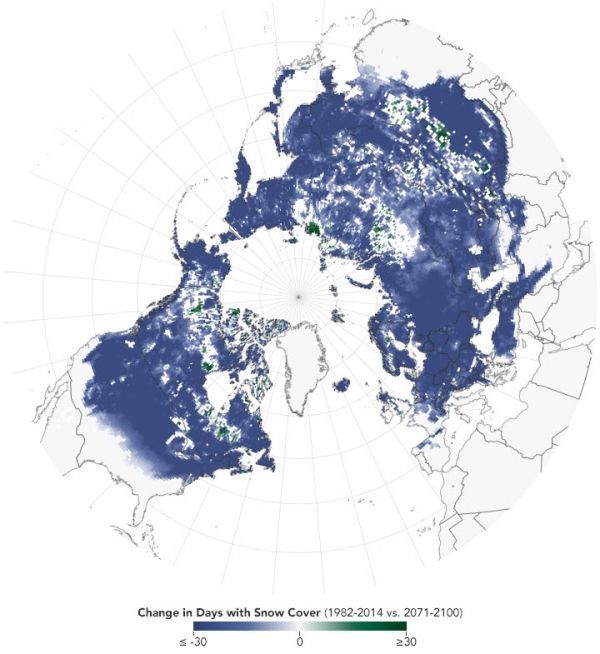For some species, surviving winter would be difficult to impossible without a layer of snow. Certain plants, animals, and microbes rely on the protective and insulating habitat that lies in the space between the bottom of the snow layer and the top of the frozen ground. But this zone of refuge—called the “subnivium”—is at risk in many areas around the planet.
Likai Zhu of Linyi University and colleagues used data from NASA and the Japan Aerospace Exploration Agency (JAXA) to conclude that global warming has already affected this important habitat, particularly in the mid-latitudes of the Northern Hemisphere. The research, published in Nature Climate Change, shows that organisms now have to endure more winter days with frozen ground but less protective snow cover. Global climate models also show that such changes will continue into the future.
The patterns of change are visible in these maps. The map above shows projected changes in the duration of winter snow cover for the 2071-2100 period compared to 1982-2014. Dark blue areas indicate where the number of days of snow cover are expected to decline the most.
Averaged globally, winter snow cover in the modeled future period is expected to last 110 days, down from 126 days for the historical period. In some locations, species will have to endure nearly an extra month without the protective cover of the subnivium. The largest declines are expected between 40 and 50 degrees latitude across North America and Asia.
Continue reading at NASA Earth Observatory
Image via NASA Earth Observatory


